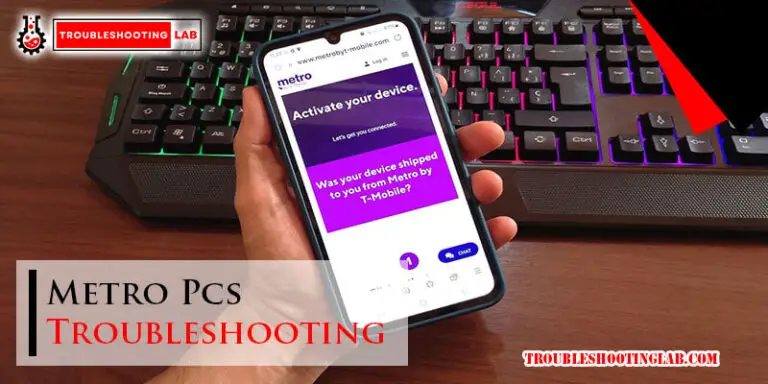Google Fiber Troubleshooting: Ultimate Guide to Solutions
Imagine you’re in the middle of a thrilling movie, or maybe you’re on a video call with a loved one, and suddenly, your internet connection decides to take a break. Frustrating, right?
If you’re a Google Fiber user, you know that while the service is known for its speed and reliability, issues can occasionally arise. How do you keep calm and tackle these hiccups effectively? You’ve come to the right place. This guide is designed with you in mind, offering simple solutions to get your Google Fiber back on track.
We’ll walk you through common problems and their fixes, ensuring your internet experience remains seamless. Stay with us, because mastering these troubleshooting tips could save you time, and more importantly, your peace of mind.
Credit: gfiber.com
Common Connection Issues
Experiencing issues with your Google Fiber connection can be frustrating, especially when you’re trying to enjoy a seamless internet experience. Understanding the common connection issues can save you time and alleviate stress. Whether you’re dealing with slow speeds, intermittent connectivity, or no connection at all, addressing these problems head-on can help you get back online quickly.
Slow Internet Speeds
Are you noticing your internet speed dragging? It might be time to check a few things. Start by running a speed test to see if your connection matches your plan. If it doesn’t, try restarting your router. Sometimes, a quick reboot can solve the issue.
Another factor could be the number of devices connected. Too many devices can hog bandwidth, slowing down your connection. Consider disconnecting devices you aren’t using.
Placement of your router also plays a role. Make sure it’s in a central location and free from obstructions. Walls and furniture can interfere with signals, reducing speed.
Intermittent Connectivity
Does your connection drop randomly? It’s annoying, right? Check for loose cables as physical connections can often be the culprit. Securing all cables may stabilize your connection.
Another cause could be wireless interference from other devices. Microwaves, baby monitors, and Bluetooth devices can disrupt Wi-Fi signals. Try moving your router away from these items.
Software updates can also help. Ensure your router’s firmware is up-to-date. Manufacturers often release updates to fix bugs and improve performance.
No Internet Connection
Are you completely offline? First, confirm if there’s an outage in your area. Google Fiber’s website or social media channels often provide updates on service disruptions.
If there’s no outage, reset your equipment. Unplug your modem and router, wait a minute, then plug them back in. This can resolve many connectivity issues.
Finally, check your account status. Ensure your payments are up-to-date. An account issue can sometimes lead to service interruption.
Having internet problems can be irritating, but by tackling these common issues, you can often restore your connection quickly. What steps have you taken to troubleshoot your Google Fiber issues?
Equipment Problems
Google Fiber offers fast internet speeds, but equipment issues can disrupt service. Addressing equipment problems quickly ensures smooth connectivity. This section focuses on common equipment issues with Google Fiber.
Router Malfunctions
Routers can malfunction, affecting internet speed and stability. Regularly check the router’s lights for any unusual patterns. Flashing or no lights often indicate a problem. Ensure the router is plugged in correctly and the power button is on. Firmware updates can also resolve many router issues.
Cable And Hardware Checks
Cables can loosen or wear out, causing internet disruptions. Inspect all cables connected to the router and modem. Look for visible damage or loose connections. Securely plug in any cables that appear loose. Replace damaged cables with new ones to ensure a stable connection. Hardware checks are essential for consistent internet service.
Modem Resets
Resetting the modem often solves connectivity issues. Locate the reset button on the modem. Hold the button for about 10 seconds. Wait for the modem to restart and reconnect. A reset often resolves minor glitches and improves performance. Ensure the modem is in a cool, ventilated area to prevent overheating.
Wi-fi Performance Tips
Are you struggling with slow Wi-Fi speeds or spotty connections? You’re not alone. Many Google Fiber users face similar challenges. But don’t worry; there are simple tweaks you can make to boost your Wi-Fi performance. Whether it’s where you place your router, managing device bandwidth, or addressing channel interference, these tips can make a noticeable difference. Let’s dive into some practical solutions that can help you enjoy a more reliable and faster internet experience.
Optimizing Router Placement
Your router’s location plays a crucial role in your Wi-Fi performance. Have you ever thought about where you put it? The best spot is usually central in your home. This can help distribute the signal evenly. Avoid placing it near walls or large metal objects, as they can block the signal. Elevating the router onto a shelf can also improve coverage. Imagine your Wi-Fi signal like water flowing; you want it to reach every corner without obstruction.
Channel Interference Solutions
Did you know your Wi-Fi might be fighting for space with your neighbor’s network? This is called channel interference. It’s like trying to talk in a crowded room. Check your router settings and switch to a less congested channel. This can be done using a Wi-Fi analyzer app. It’s a quick fix that can significantly improve your connection speed. Picture your Wi-Fi as a radio station; you want a clear frequency.
Device Bandwidth Management
Ever notice your internet slows down when everyone’s online? Your devices might be hogging bandwidth. Prioritize essential devices like your computer or smart TV. Limit bandwidth-heavy activities on less critical devices. Many routers offer Quality of Service (QoS) settings to help with this. Try it and see if your streaming experience improves. Think of your bandwidth like a highway; you want to ensure the main lanes are clear.
Now, it’s your turn. Which of these tips will you try first? Share your experiences and let us know how they worked for you. Your feedback could help others facing similar issues.
Network Configuration Adjustments
Network configuration adjustments can enhance your Google Fiber experience. Adjusting network settings can solve many connectivity issues. These adjustments can improve speed and security. They also provide better control over your network. Let’s explore some essential configuration changes.
Changing Network Settings
Access your Google Fiber network settings through the Fiber app or website. Log in with your credentials. Look for the network settings option. Here, you can change your Wi-Fi name and password. Choose a unique name for easy recognition. Use a strong password for better security. Adjusting these settings can boost your network’s performance.
Setting Up A Guest Network
Setting up a guest network is a smart move. It keeps your main network secure. Guests can use the internet without accessing your personal devices. In your network settings, find the guest network option. Enable it and set a different password. This keeps your main network private and secure.
Advanced Security Measures
Security is crucial for a safe internet experience. Enable WPA3 encryption for maximum protection. Check for firmware updates regularly. They fix security vulnerabilities. Set up a firewall to block unwanted access. These advanced measures protect your data and privacy. Simple steps can make a big difference in securing your network.
Service Outage Responses
Experiencing a service outage with Google Fiber can be frustrating, especially when you’re in the middle of an important task or enjoying your favorite show. Understanding how to respond effectively during these outages can save you time and stress. Whether it’s checking for local outages, contacting customer support, or utilizing backup solutions, there are practical steps you can take to keep your connectivity as seamless as possible.
Checking For Local Outages
First, verify if the outage is local. Open the Google Fiber app or website to check the network status in your area. They often provide real-time updates about service disruptions. You can also search social media platforms, as they can be a goldmine for local outage reports. If others in your area are experiencing similar issues, it could indicate a broader problem. Have you ever thought about how much we rely on immediate connectivity?
Contacting Customer Support
If you’re not finding information online, it’s time to reach out to customer support. Google Fiber offers various ways to contact them—via phone, chat, or email. They’re usually quick in response and can provide specific insights into the issue. When you describe your problem, be concise and clear. This helps them assist you faster. Have you ever felt that sometimes a simple phone call can resolve a problem quicker than endless searching?
Utilizing Backup Solutions
Consider having a backup internet solution for emergencies. You might use a mobile hotspot from your phone or a secondary internet service. These can be lifesavers during prolonged outages. You could also download essential files ahead of time to work offline. This is especially useful if your work depends heavily on internet access. How prepared are you for unexpected connectivity issues?
Service outages are inconvenient, but knowing how to respond can make all the difference. By checking for local outages, contacting customer support, and utilizing backup solutions, you’ll be better equipped to handle disruptions with ease.

Credit: www.youtube.com
Advanced Troubleshooting Tools
Explore advanced tools for Google Fiber troubleshooting to enhance your internet experience. Diagnose and fix issues with ease using these resources. Stay connected without hassle.
Are you dealing with Google Fiber issues that seem beyond the usual unplug-and-replug routine? Advanced troubleshooting tools can be your ally in navigating these complexities. These tools offer deeper insights into what’s going wrong and how you can fix it. So, let’s dive into the world of advanced troubleshooting to ensure your internet runs smoothly.Using Diagnostic Software
Diagnostic software can be a lifesaver when you’re faced with recurring internet problems. These programs analyze your connection and pinpoint issues that might not be immediately visible. Imagine having a magnifying glass that reveals the hidden bugs in your network. You can download these diagnostic tools from trusted sources or directly from Google Fiber support. They provide a detailed report on your network’s health, giving you actionable steps to enhance performance.Understanding Error Messages
Error messages can be cryptic and frustrating, but they are crucial in troubleshooting. When you encounter an error, take a moment to read it carefully. Each message tells a story about what’s happening with your connection. Is it a hardware issue or a network outage? Understanding these messages can guide you towards the right solution, saving you time and effort in trial and error.Monitoring Network Performance
Monitoring your network’s performance isn’t just for tech experts; it’s something you can easily do too. Tools like performance monitors track your internet speed and signal strength over time. Have you ever noticed that your connection slows down at specific times of the day? These tools can help you identify patterns and optimize your usage. Keeping an eye on performance lets you anticipate problems before they disrupt your daily routine. Have you tried any of these advanced troubleshooting tools? Which ones worked best for you, and why? Share your experiences, and let’s make Google Fiber troubleshooting more manageable together!Diy Fixes And Quick Hacks
Google Fiber is fast and reliable. Yet, occasional hiccups can occur. DIY fixes and quick hacks offer easy solutions. They save time and reduce frustration. No need for professional help. Tackle common issues with simple tricks. Enhance your internet experience effortlessly.
Simple Reset Techniques
Restarting devices often solves connectivity issues. Begin with your modem. Unplug it. Wait for 30 seconds. Plug it back in. Let it reboot completely. This clears temporary glitches. Your connection may improve instantly.
Next, reset your router. Locate the reset button. Press it gently for 10 seconds. This refreshes settings. Speeds up internet. Check your device connections after resetting.
Temporary Workarounds
Encountering slow speeds? Try switching channels on your router. Log into the router settings. Change the Wi-Fi channel. Choose a less crowded one. This can improve performance.
Use an Ethernet cable for stable connection. Especially during important tasks. Wired connections are often faster. They avoid wireless interference. Good for gaming or streaming.
Cable Management Tricks
Messy cables cause signal interference. Organize cables neatly. Use zip ties or clips. Keep them untangled. Avoid crossing power cables with internet cables. This minimizes interference.
Check cable connections regularly. Ensure they are secure. Loose cables can disrupt service. Inspect for wear or damage. Replace frayed cables promptly.
When To Seek Professional Help
Experiencing repeated slow internet speeds or persistent connectivity issues with Google Fiber? These problems often need expert attention. Professional help ensures precise diagnosis and efficient solutions, saving time and frustration.
When troubleshooting Google Fiber issues, self-help can solve many problems. But some situations need expert intervention. Knowing when to seek professional help can save time. It can also prevent further complications. Here’s how to decide when to call in the pros.Identifying Complex Problems
Some problems aren’t easily fixed at home. Slow internet speeds can sometimes result from network issues. Frequent disconnections might indicate faulty hardware. If basic troubleshooting doesn’t work, consider professional help. Experts can diagnose issues with precision. They have tools to check for hidden problems.Evaluating Repair Costs
Assessing repair costs is important. Some fixes might be simple and affordable. Others could be expensive and time-consuming. Weigh the cost of professional help against potential benefits. DIY attempts might lead to more damage. Professionals can offer a clear cost estimate.Choosing A Professional Service
Select a reputable service for repairs. Look for certified technicians. Check online reviews and ratings. A reliable service offers guarantees and warranties. This ensures peace of mind. Professional help ensures efficient and effective solutions.
Credit: www.reddit.com
Frequently Asked Questions
How Do I Reset Google Fiber Equipment?
Unplug your Fiber device. Wait 10 seconds. Plug it back in. This can fix common issues.
Why Is My Google Fiber Internet Slow?
Check for too many devices connected. Also, try restarting your router. It helps improve speed.
What Should I Do If Google Fiber Is Not Working?
Check cables and connections. Restart your devices. If the issue persists, contact Google Fiber support.
How Can I Improve My Google Fiber Wi-fi Signal?
Place your router in a central location. Keep it away from walls and metal objects for better signal.
Does Weather Affect Google Fiber Service?
Extreme weather can disrupt service. Check for outages in your area during such conditions.
Conclusion
Fixing Google Fiber issues can be simple with the right steps. Always check connections first. Reset devices for a quick solution. Use the app for guidance. It’s helpful. Contact support if problems persist. They’re ready to assist you. Keep devices updated for smooth performance.
Regular maintenance prevents issues. Stay informed about new features. Understanding your equipment helps. With these tips, enjoy fast and reliable internet. Troubleshooting doesn’t have to be hard. Just a little patience and know-how. Happy surfing!






